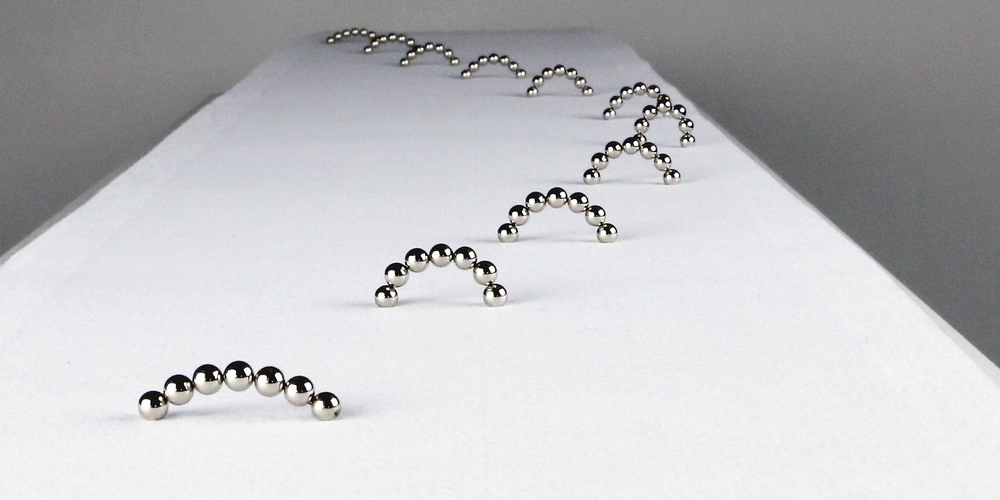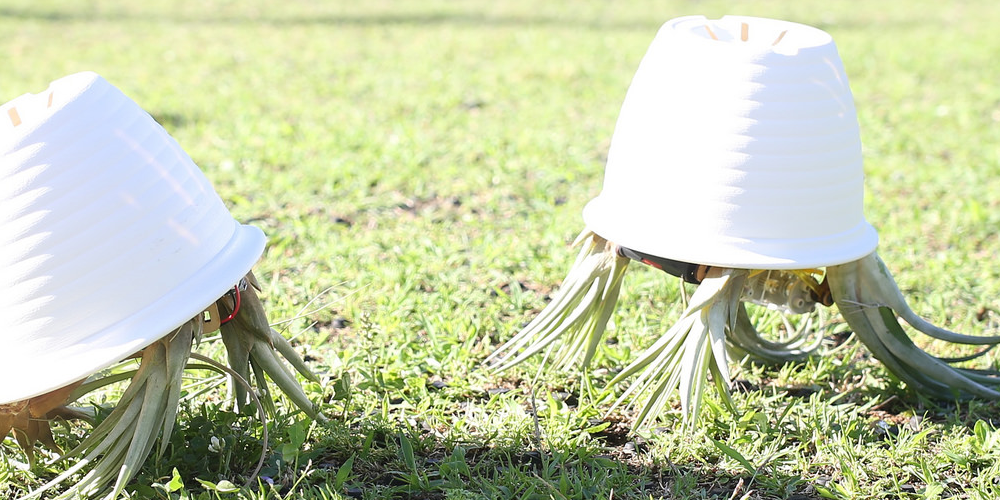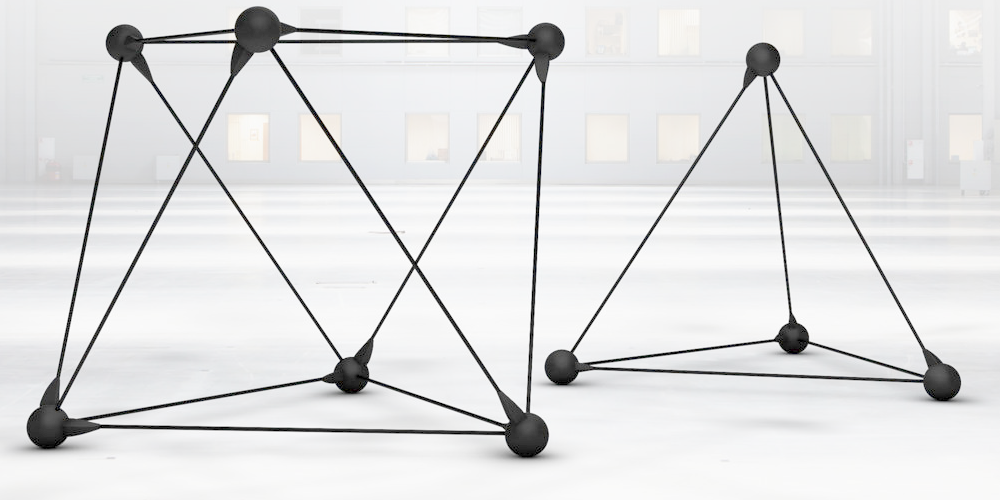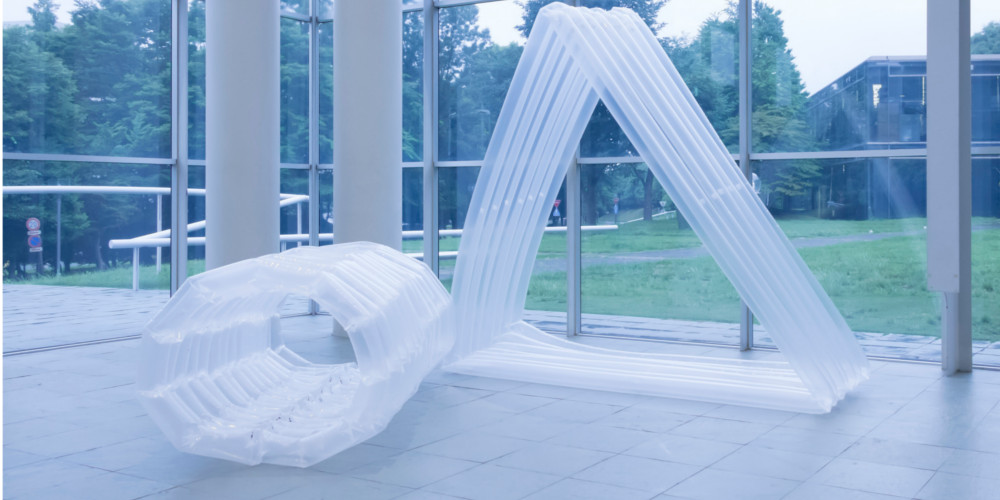
Yasuaki Kakehi
Yasuaki Kakehi is a media artist and HCI researcher. An associate professor of Environment and Information Studies at Keio University. He develops interactive media that extend the human body, tools and communication by multiplying the five senses, affecting the properties of physical materials.
Phytowalkers
Phytowalkers is a colony of stand-alone botanical robots consisting of plant pots, plants and electronic components. In this project humans make and “grow” a robot. We utilize air-plants as the legs of the robots and plant them in a pot to let them grow. After it has been grown, when it is turned upside down, the botanical robot begins to walk around on its “legs” as a new living organism. Each botanical robot’s movements will differ according to the length and shape of its legs. Phytowalkers have a microcontroller, a motor and several sensors inside them. When one reaches a sunny area, it will stop walking and charge itself up using its solar cell and the photosynthesis of the plants. The botanical robots will compete as they push each other to stay in the optimal sunny area . Under this simple rule adjacent phytowalkers will brush against one another and this may help with their pollination.
In collaboration with Junichi Yamaoka (JP).
microcosm
This is an installation composed of two polyhedral structures which transform their physical positions, scales and shapes. Their geometrical configurations continuously change by reacting to each other and the Environment. This piece is a new embodiment of our research vision, “MorPhys” which realizes a morphing physical environment. We have developed the polyhedral structures’ modules consisting of nodes and connectors. Each node is linked to the connectors made of thin cylindrical rods. The connectors can be flattened and stored in the compact housing on the nodes by rewinding. Thus the structure reconfigures itself by dynamically changing the length of its connectors.
microcosm is a system in which polyhedral structures act physically. It implicates a new form of interaction between the physical and digital world.
In collaboration with Shohei Takei (JP).
Loopers
Loopers is a sound installation composed of twelve (artificial) measuring worms progressing on a stage. Each worm continues to inch back and forth by alternately curving and straightening its body. The worms generate sounds in various rhythms and patterns by tapping the stage. Arrays of electromagnets are installed underneath the stage. Each worm is composed of a row of seven magnetic balls. By controlling the polarity of each electromagnet, a dynamic magnetic field is generated on the stage. The worms change their posture and move on the stage in response to the field. Although the magnetic field is operated by computer, the worms often exhibit random movements or behavior according to their bodies’ conditions and the environmental conditions. This piece generates sounds between these controlled and uncontrolled elements.
In collaboration with Michinari Kono (JP).
Single-Stroke Structures
We now live in the age of mobility. With the development of urban transport and overpopulation in the cities, we are constantly surrounded by billions of people. This project explores the possibility of improving the livability in crowded cities with a portable partition to create your own space. We use Single Stroke Structures(SSSs), a digital fabrication system that creates architecture-scaled pneumatic objects by inflating one thin plastic poly tube. By partially bonding the tube with heat and pressure in multiple positions and changing the space between the bonds, we can control the inflated tube’s curvature and convert the single stroke into various shapes. The one-stroke structure makes it possible for users to inflate it when necessary and deflate it to carry it around in a compact roll.
In collaboration with Takahiro Hasegawa (JP).




